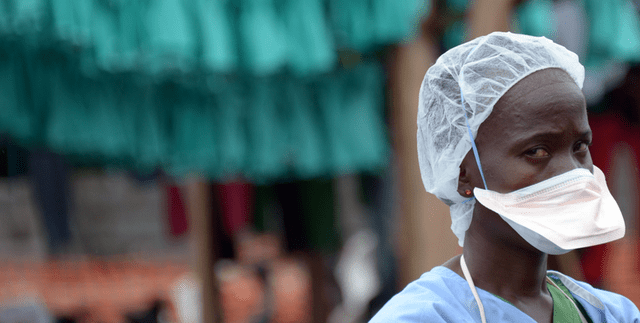Where We Work
See our interactive map


Photo courtesy of ICTWorks.
These are just some of the tools governments can use to prevent, contain, and diagnose COVID-19.
Global coronavirus infections now exceed 200,000 confirmed cases in 144 countries, with over 8,205 deaths from COVID-19, leading to international travel bans and almost 40 conference cancellations across the international development industry.
Donors like USAID, DFID, World Bank, and Gates Foundation are asking, “What global digital health solutions are available for international COVID response that can be implemented by government health systems in low- and middle-income countries?"
We asked the Global Digital Health Network—over 4,000 digital health practitioners—for their thoughts on which digital health solutions would be applicable for COVID response in low- and middle-income countries, and received multiple ideas that public health managers can use to mitigate this international communicable disease outbreak.
Add your COVID response solution here!
The responses mainly focused on prevention, diagnosis, and treatment. These digital health solutions could be used to communicate how to avoid coronavirus infection, understand who might be infected with COVID-19, and track treatment protocols and adherance. They are in addition to artificial intelligence solutions for COVID containment we explored previously.
Donors, governments, and health workers will be using this longer list of 20+ digital health solutions to identify new technologies for deployment to contain the coronavirus. You can add your solution to this list here.
The Ministry of Health of Sri Lanka developed a web-based DHIS2 solution to capture information on high risk passengers entering the country from at-risk countries for active COVID-19 surveillance.
nCoV Surveillance System captures demographics, immigration, symptoms of COVID-19 disease, and possible contacts at all ports of entry, for local public health officers, based on their geographic area. From 0-14 days, it captures potential symptoms of COVID-19 disease and any action taken. After 14 days, it captures symptoms of COVID-19 disease and any action taken at the end of the surveillance period.
askNivi is a free interactive chat service that makes it easy for people to learn about key health topics and make informed and supported decisions about their health. New conversations were added to share information from the World Health Organization when people began asking questions about COVID-19, and content will be expanded as the coronavirus situation changes.
Harmony is a rapidly deployable data integration and advanced analytics platform for epidemic surveillance, case management and outbreak response. Low- and middle-income countries use Harmony to rapidly improve their epidemic surveillance, information management and response capabilities during infectious disease outbreaks.
Mozambique recently used these capabilities to mount an effective, data-driven response to a cholera outbreak which reduced the daily number of new cases in the most affected province from 400 to zero in one month.
CommCare is an open-source mobile case management platform used by 700,000 frontline health workers in 60+ countries to track clients through a continuum of service delivery, commodities supply chain, and patient messaging.
CommCare allows non-engineers can build and adapt mobile applications for contact tracing, data collection, decision-support, client tracking, SMS-interaction, and map-based visualizations.
NoviGuide is a decision support platform that transforms static guidelines into point-of-care decision trees. Health systems can rapidly deploy guidance, monitor use, and remove outdated content.
NoviGuide standardizes care and removes old protocols while capturing where and when clinicians are accessing guidance. The dashboard helps visualize clinician concern, an important indicator of disease spread in epidemics where testing is unavailable or limited.
Consult Station is a fully connected medical booth that gives providers the ability to remotely examine a patient using medical grade diagnostic instruments. Health practitioners can examine and diagnose many more patients without risking contamination of the clinicians themselves. Video-based telemedicine and the Consult Station give remote clinicians to ability to take vitals, examine the heart, lungs, and ENT functions for a true remote diagnosis.
mHero is a two-way, mobile phone-based communication system that uses basic text messaging, or SMS, to connect ministries of health and health workers. mHero operates on simple talk-and-text mobile devices—no smartphone or tablet required.
Previously, IntraHealth International developed mHero with the government of Liberia and UNICEF for the Ebola outbreak in Liberia, where over 10,000 people lost their lives. Now, Liberian ministry officials are using mHero to send COVID-19 messages to health workers. Watch: mHero: A Cost-Effective, Real-Time Communications Solution for National COVID-19 Response
Community Health Toolkit is a global public good that includes open-source technologies for community health workers and supervisors; open-access resources; and a community of practice to advance universal health coverage.
Community Health Toolkit can support COVID-19 response through community and event-based SMS/USSD check-ins by self-quarantined persons, educational messaging including protective measures for community health workers and communities, referrals and treatment adherence, and data harmonization with other platforms.
HealthBeats is a global remote vitals monitoring platform designed to bring health care to home. Users can take their vital measurements with results transmitted in real time to care providers. For people under quarantine, HealthBeats can track temperature, blood oxygen levels, and heart rate with automated and streamlined data collection.
10. ____
We left #10 empty for a reason. This list above is just a synopsis of potential solutions.
Technologists, we need your ideas to build a truly comprehensive list of possible digital health solutions. Governments, donors, and implementers, check out the full list of 20+ potential solutions for coronavirus response.
This piece was originally published on March 7, 2020 on ICTWorks. Some numbers may have been updated.
Get the latest updates from the blog and eNews




